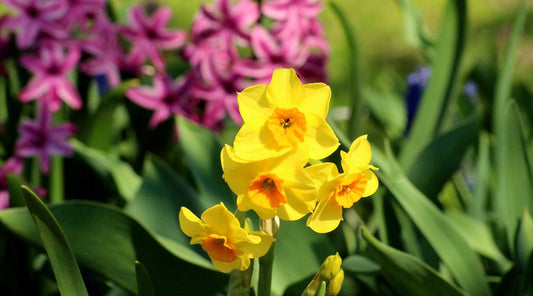Planning Your Summer Vegetable Garden

Next, select vegetables that flourish in the summer heat. Popular choices include corn, tomatoes, cucumbers, peppers, zucchini, beans, and eggplants. These vegetables thrive in warm temperatures and will yield a bountiful harvest with the right care.
Create a garden layout that allows for adequate spacing between plants. Crowded plants can lead to poor air circulation and increased risk of disease. Plan to rotate your crops each year to prevent soil depletion and reduce pest issues.
Preparing Your Garden Bed
A healthy garden starts with well-prepared soil. Begin by clearing the garden bed of any weeds, rocks, or debris. Loosen the soil to a depth of about 12 inches to encourage root growth. Adding organic matter, such as compost or well-rotted manure, will improve soil structure and provide essential nutrients.Composting is a fantastic way to recycle kitchen scraps and yard waste into nutrient-rich soil. If you don't already have a compost pile, consider starting one. Simply combine green materials (like vegetable scraps and grass clippings) with brown materials (such as leaves and straw) in a bin or pile, and turn it regularly to speed up decomposition.
Planting Summer Vegetables

- Tomatoes: Plant transplants deep, burying the stem up to the first set of leaves. This encourages strong root development.
- Cucumbers: Sow seeds directly in the garden once the soil has warmed. Provide a trellis or support for the vines to climb.
- Peppers: Transplants are recommended for peppers. Space them about 18-24 inches apart to allow for growth.
- Zucchini: Direct sow seeds in hills spaced about 3 feet apart. Zucchini plants can spread out, so give them plenty of room.
- Beans: Bush beans can be sown directly in rows, while pole beans need a trellis for support.
- Eggplants: Transplants are best for eggplants. Space them 18-24 inches apart and stake them to support the heavy fruit.
- Corn: Plant kernels 1 - 1 1/2" deep in warm, dry soil, spaced 9-12" apart in at least two rows for each variety.
Caring for Your Summer Garden
As temperatures rise, proper care becomes essential to keep your garden thriving. Watering is particularly important in hot weather. Aim to water deeply and less frequently rather than shallowly and often. This encourages deep root growth and helps plants withstand dry periods. Early morning or late evening watering reduces evaporation and stress on the plants.Mulching is another crucial practice for summer gardening. Apply a layer of organic mulch, such as straw or wood chips, around your plants. Mulch helps retain soil moisture, suppress weeds, and regulate soil temperature.
Fertilizing your garden will provide the necessary nutrients for optimal growth. Use a balanced, organic fertilizer according to the package instructions. Be cautious not to over-fertilize, as this can lead to excessive foliage growth with fewer fruits.
Pest and Disease Management
Summer gardens can attract a variety of pests and diseases. Monitoring your plants regularly will help you catch problems early. Here are some common issues and how to manage them:- Aphids: These tiny insects can be controlled by introducing beneficial insects like ladybugs or using insecticidal soap.
- Tomato Hornworms: Handpick these large caterpillars off your plants or use Bacillus thuringiensis (Bt), a natural insecticide.
- Powdery Mildew: Prevent this fungal disease by ensuring good air circulation and avoiding overhead watering. Use a fungicide if needed.
- Squash Bugs: Inspect your plants regularly and remove any eggs or nymphs. Neem oil can also be effective.
Harvesting and Enjoying Your Vegetables
The reward for all your hard work is a bountiful harvest of fresh, home-grown vegetables. Knowing when and how to harvest is crucial for the best flavor and quality.- Tomatoes: Harvest when they are fully colored and slightly soft to the touch.
- Cucumbers: Pick when they are firm and about 6-8 inches long. Overripe cucumbers can become bitter.
- Peppers: Harvest when they reach the desired size and color. Green peppers can be picked early, or you can wait for them to turn red, yellow, or orange.
- Zucchini: Harvest when they are about 6-8 inches long for the best texture and flavor.
- Beans: Pick beans regularly to encourage more production. Harvest when they are firm and before the seeds bulge.
- Eggplants: Harvest when the skin is glossy and the fruit feels firm. Overripe eggplants can be bitter.
Conclusion
Summer vegetable gardening is a delightful and rewarding hobby that brings nature’s bounty right to your doorstep. With proper planning, preparation, and care, you can enjoy a thriving garden filled with fresh, delicious vegetables. So grab your gardening gloves, get out there, and start growing your summer vegetable garden today!
Resources:
Yard Butler Twist Tiller is great for planting and prepping soil.
Garden Augers make quick work of digging holes, using your power drill.
Bulb & Garden Planter is perfect for making just the right size holes.







